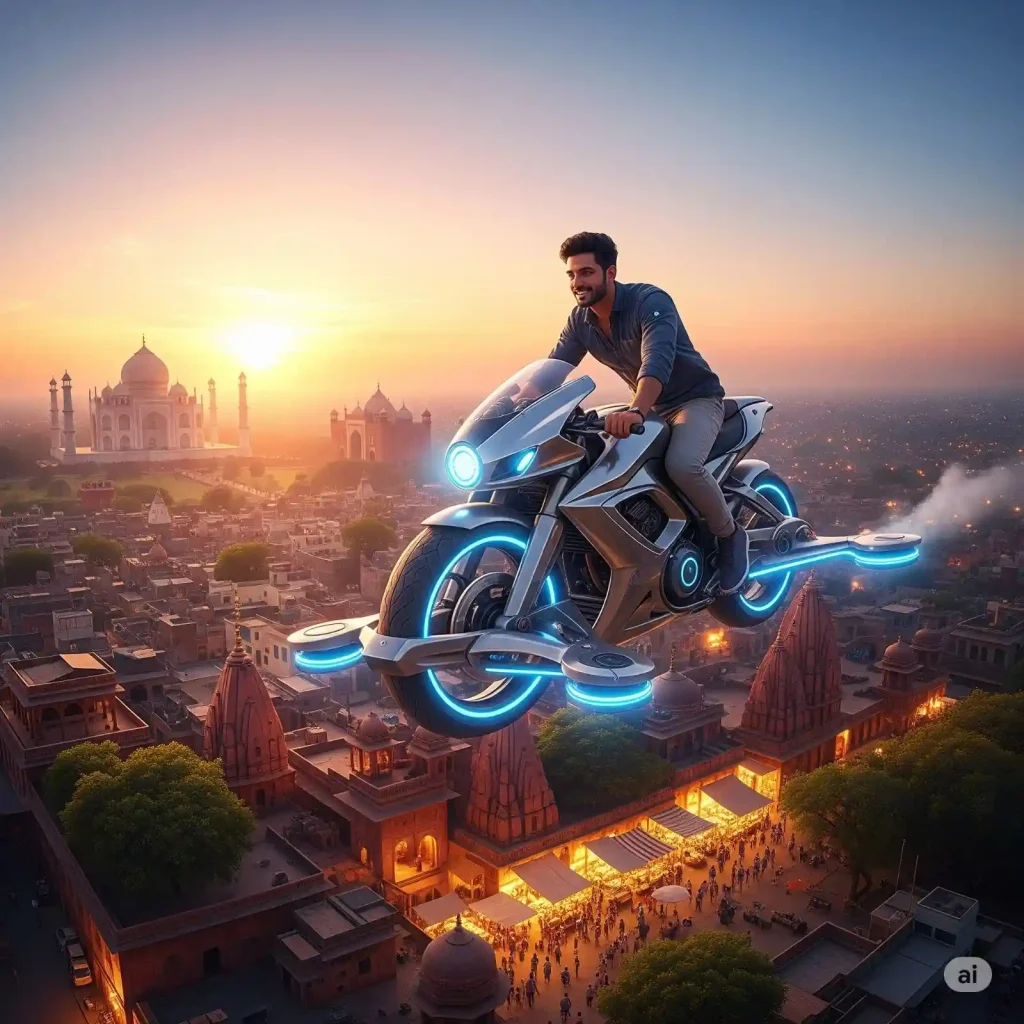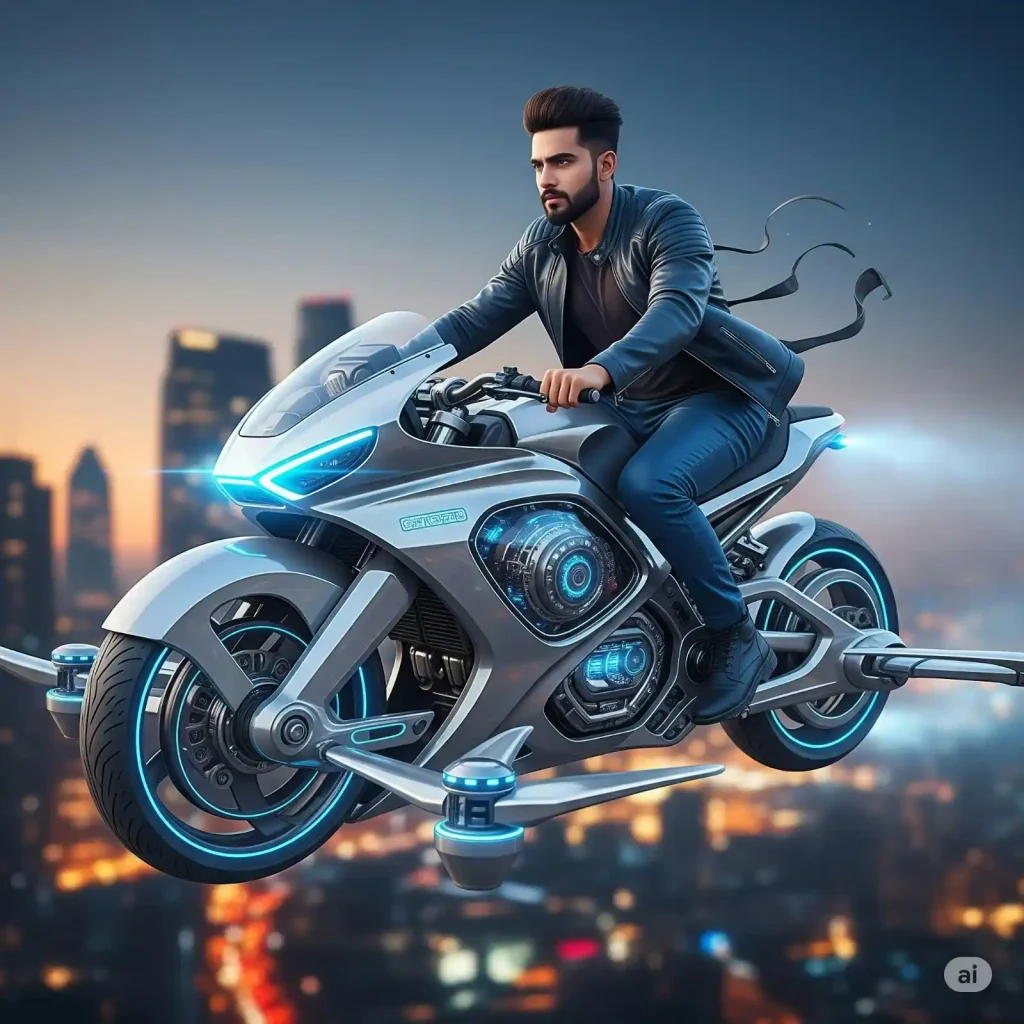Discover how flying bike could transform urban travel by 2038. Explore features, future impact, pros, cons, and challenges of sky commuting.
Introduction
What if your daily ride could fly above traffic, gliding over buildings and rivers? It may sound like science fiction, but flying bikes are getting real. By, we could witness a major shift in personal transportation—from roads to clouds. With rapid growth in aerial mobility and electric vehicle technology, flying bikes may become part of daily life, just like electric scooters today. But are we truly ready for the flying bike era?

What Is a Flying Bike?
A flying bike is a hybrid vehicle that combines the look and feel of a motorcycle with drone-like flight capabilities. Most models are powered by electric or hybrid engines and can lift off vertically using rotor-based technology, like drones.
Companies like Jetpack Aviation, Aerwins XTurismo, and HoverSurf have already showcased working prototypes. These flyings bikes can travel at 60–100 km/h in the air and are expected to reach even higher speeds in the near future.
How Will Flying Bikes Impact Our Future?
1. Urban Transport Revolution
With increasing traffic congestion in cities, fly bikes could ease pressure on roads. They can take you from point A to B through the sky in a fraction of the time.
2. Emergency Services
Imagine ambulances or firefighters using flying bikes to reach disaster zones faster, especially in hilly or rural regions. This could save countless lives.
3. Luxury & Adventure Travel
sky bikes may become the next luxury experience—used for sky tours, mountain expeditions, or even racing events.

Challenges Ahead for Fly Bikes
While the idea is exciting, it comes with serious challenges:
Pros & Cons of sky Bikes
| Pros | Cons |
|---|---|
| Avoid traffic jams | Expensive to own |
| Faster emergency response | Safety risks |
| Futuristic commuting | Limited battery range |
| Eco-friendly (electric) | Needs strict regulations |
Flying Bikes in India: When Can We Expect Them?
While global prototypes are being tested, India may take time to adopt this tech. Factors like cost, infrastructure, and regulations will delay mass adoption. However, trials and small-scale demos could begin by 2037–2038, especially in tech cities like Bangalore, Mumbai, and Hyderabad.
Are We Really Ready for the Sky Roads?
sky bikes promise freedom, speed, and futuristic mobility. But like all tech revolutions, they’ll need time to become safe and affordable. Until then, governments, companies, and innovators must work together to build a strong base—just like they did for electric vehicles.

Conclusion
The sky bike era is not far off—it’s already knocking on the door. By 2038, you might be choosing between a ground scooter and a skybike. While many challenges lie ahead, the future of flying bikes looks promising. The question is no longer “Can we build it?” but “How soon will it become part of everyday life?”
FAQs
Q1. What is a flying bike?
A bike is a hybrid vehicle that can operate like a motorcycle on land and fly using drone-like rotors or propellers.
Q2. Are flying bikes real or still in testing?
Yes, bikes are real. Several prototypes have been successfully tested by companies like Aerwins and Jetpack Aviation.
Q3. When will bikes be available in India?
Mass adoption may take time, but demo flights and trials could begin by 2037–2038 in major cities.
Q4. How much will a flying bike cost?
Currently, flying bikes cost over ₹3 crore ($300,000), but prices may drop with wider adoption.
Q5. Are bikes safe to use?
They’re still in early stages. Safety concerns like battery life, air traffic, and flight control are being addressed.
Know more related:
7 Amazing Ways Flying Cars Will Transform India’s Future Travel








